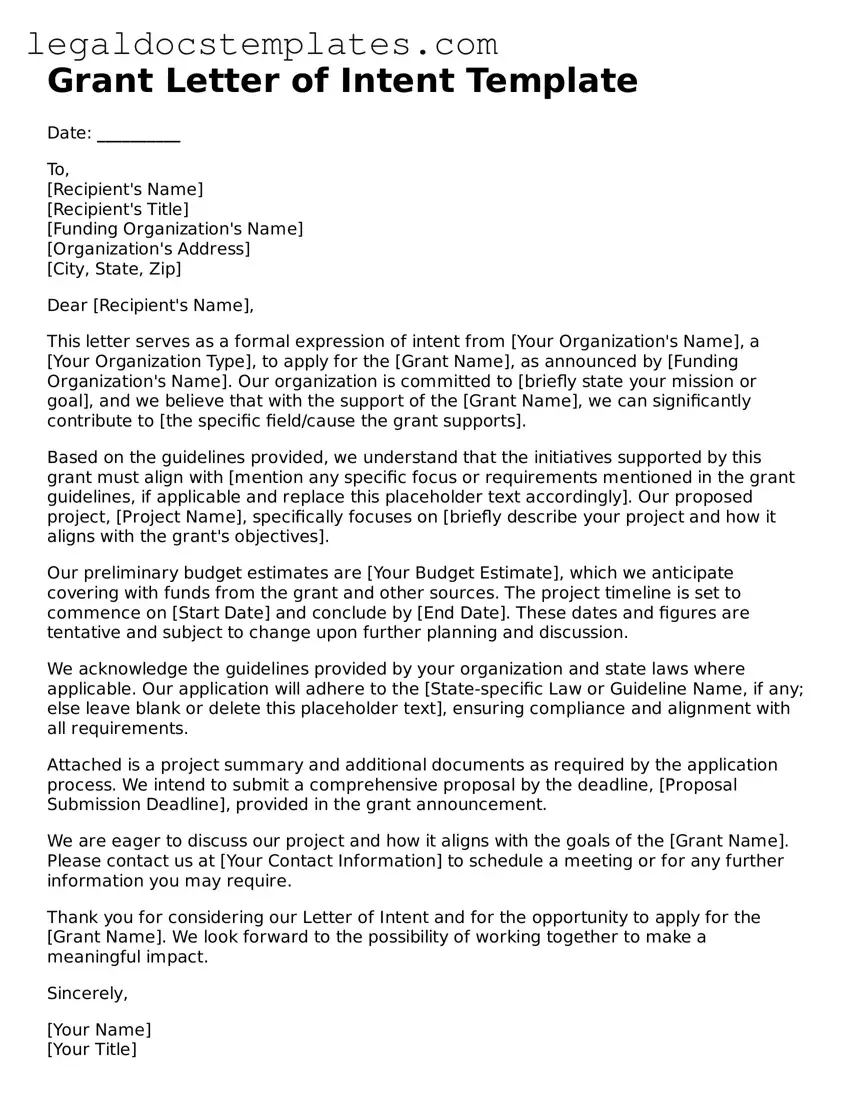The Grant Proposal mirrors the Grant Letter of Intent in its objective to secure funding, but dives deeper into the specifics of the project, including detailed project descriptions, budgets, and timelines. While the Letter of Intent serves as an initial introduction or request for consideration, the Grant Proposal provides a comprehensive blueprint of how the project will unfold, its expected outcomes, and how funds will be utilized, highlighting the project's significance and the applicant's capacity to manage it effectively.
The Sponsorship Request Letter shares a similar foundation with the Grant Letter of Intent, aiming to garner financial or in-kind support, but it is typically directed towards corporate entities or private sponsors rather than grant-making organizations. This letter outlines the benefits that the sponsor would receive in exchange for their support, such as advertising or promotional opportunities, making it both a request for assistance and a marketing proposition.
Business Plan Submissions are akin to the Grant Letter of Intent as they both aim to persuade an audience of the viability and worthiness of a particular project or venture. However, business plans are primarily targeted towards investors or financial institutions and encompass a broad range of information including market analysis, organizational structure, and financial projections with the intent of showcasing the business's potential for success and profitability.
Research Proposal submissions are particularly comparable to the Grant Letter of Intent when seeking funding for academic or scientific research. Both documents need to convincingly present the problem statement, objectives, and the significance of the proposed research. However, research proposals typically include a thorough review of existing literature and detailed methodology, aiming to demonstrate the feasibility and necessity of the research beyond the initial appeal for funding.
The Project Charter is similar to the Grant Letter of Intent as it marks the formal initiation of a project. However, it is an internal document, usually within an organization, that outlines the project's scope, objectives, and stakeholders, officially sanctioning the project's start. Unlike the letter of intent that seeks approval or funding from external sources, the project charter serves as an internal agreement and guideline for project execution.
Letters of Inquiry for philanthropy or partnership opportunities share the introductory purpose of the Grant Letter of Intent but are often less formal and may not be strictly tied to funding requests. These letters generally aim to explore potential collaborations or support without delving into the specifics of a proposal, serving as a preliminary step to gauge interest or compatibility before drafting more detailed requests or proposals.
The Memorandum of Understanding (MOU) parallels the Letter of Intent in its preliminary nature, establishing a mutual agreement between parties to explore a potential collaboration or project without committing to specific terms. It is broader and less detailed than a full contract but signifies a serious intent to move forward in negotiations, outlining the basic structure or framework of the intended partnership or agreement.
Expressions of Interest (EOI) are closely related to the Grant Letter of Intent by indicating a party's interest in participating in a project, procurement process, or any opportunity before formal procedures are initiated. An EOI serves to signal potential involvement without entering into binding commitments, thus allowing entities to express interest in an opportunity and be considered in early stages of project or partnership developments.
The Concept Paper, often used in academic and funding circles, is similar to the Grant Letter of Intent as it provides a succinct overview of a project or research idea. However, it usually targets a specific audience or funding opportunity and is used to gauge initial interest and feedback. It outlines the goals, methodology, and potential impact of the project, serving as a precursor to more detailed proposals or applications.
